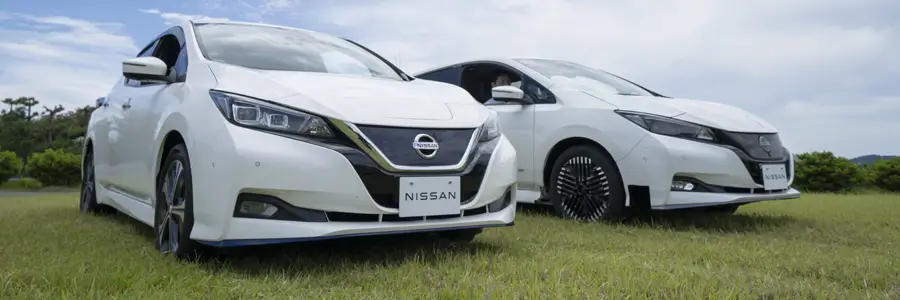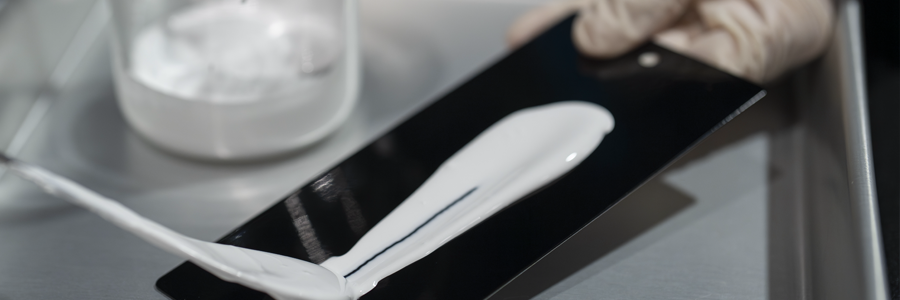Nissan trials cool paint technology

Choosing the right colour for your new lease car is obviously an important decision. There are so many different finish options to choose from and of course, we all have our own personal preferences when it comes to a particular colour or shade too - although most people seem to prefer grey. To further complicate the issue, it might not be long until you can add Nissan’s cool paint to the list of options as well.
We all know how hot a car can get when parked in the sun for a while. Nissan’s cool paint is an innovative automotive paint aimed at helping lower a vehicle's ambient cabin temperature in summer and reduce the energy usage of the air-conditioning system.
The project is part of Nissan's search for innovative solutions to help create a cleaner, more sustainable society, and to make your life a little easier and more comfortable in the process.
Cool paint means cool cabin, which means less need for aircon
A cooler cabin is not only more pleasant when you first get in, it also requires less air-conditioning run-time to cool it down to a comfortable temperature. This helps reduce load to the engine, or in the case of an electric vehicle, draw on the battery. This is especially important as we enter the EV era, where the load from running air-conditioning in summer can have a sizable impact on the battery. In the case of both powertrains, an improvement in efficiency is expected, as well as occupant comfort.
The use of radiant cooling paint isn't a new idea in itself. The technology has been around for a while but its use has largely been restricted to the building industry. It's often very thick so it needs to be applied with a paint roller, it doesn’t take a protective clear topcoat, and it can leave a chalky residue when touched. In other words, it’s utterly useless for painting cars.
Nissan clearly decided that’s a sufficiently important problem that requires a solution. Important enough that since commencing the development in 2021, Nissan has already tested over 100 cool paint samples.
Developed in partnership with Radi-Cool, a specialist in radiative cooling products, the paint incorporates two different microstructure particles that react to light. One particle reflects the near-infrared rays in sunlight that cause traditional paint to heat up. The second particle is the really clever part of the breakthrough. It creates electromagnetic waves that counteract the sun's rays, redirecting the energy away from the vehicle and into the atmosphere. When combined, the particles in Nissan's cool paint reduce the transfer of heat into surfaces such as the roof, hood, doors, and panels.

Haneda airport trial
In November 2023, Nissan commenced a 12-month feasibility trial at Tokyo’s Haneda airport, applying the cool paint to a Nissan NV100 service vehicle operated by All Nippon Airways (ANA) airport services. With its wide-open tarmac areas, an airport is the perfect environment to conduct real-world tests of the paint's performance.
Although still in the testing phase, the results to date have been impressive. Parked side-by-side under the sun, a vehicle treated in Nissan's cool paint has shown significant temperature differences compared to traditional automotive paint. Exterior surface temperatures have been reduced by up to 12° Celsius and the interior by up to 5° Celsius, simply by changing the paint.
The key challenges in developing an automotive version are to ensure it can incorporate a clear topcoat, be applied via a spray gun (not a roller), and meet Nissan's rigorous quality standards. It’s not going to become a familiar option unless it’s simple and cost-effective from the manufacturer’s point of view.
The latest version to be evaluated is still approximately six times thicker than typical automotive paint so it’s not quite there yet. On the plus side, Nissan has confirmed the new paint’s resistance to salt and chipping, peeling, scratches, chemical reactions, along with colour consistency and repairability. More importantly, Nissan has demonstrated that cool paint technology works and can have a significant impact on both the external and internal temperature of a car.
As development progresses, Nissan continues to explore thinner options that deliver the same level of cooling performance with the intention that they can one day be offered to its customers in a variety of colours.
View our latest blog posts

Categories
Pages
We are a family run business based in rural Worcestershire. Our team of 38 staff are on hand to provide an exceptional service to personal and business customers.
Read More
